In the past, I’ve shown you how I used a translucent diffuser to create soft light with a Speedlight and hot red hairdo in a hot red jeep. When you shine light through a translucent material, it spreads out and makes it bigger and softer.
But speed lights are expensive and calling them temperamental is an understatement. The diffuser can be had for well under $50, however, and is the perfect complement to the largest, cheapest light source in the solar system: The sun. I’d go as far as to say that the cheapest, fastest way to make your portraiture better is to learn to use this simple tool. My preferred style is the 40-by-60 inch oval, and it comes with covers in black, white, silver. and gold.
Light direction with reflectors
In the picture above, I’ve used two of these to create soft light on the subject’s face and a warm hair light from behind. The hair light is done simply by standing in the sunshine behind your subject and bouncing the light onto the back of her head. It sounds simple, but you should really practice finding the light and bouncing it in the right direction. It’s especially tricky when the sun is setting low and long shadows are in the way of standing in the direct light.
Photographers usually ask me what to do if you don’t have assistants to hold these. My answer is: Get an assistant to hold these!
You can get reflector holders that will mount to a light stand, but they are easily blown over in the slightest breeze. Plus, you’re missing out on an opportunity to build a relationship with a fellow photographer if you don’t ask someone for help.
When you work with other photographers you build trust, learn new skills and add resources to your network. That is the most valuable thing you can do as a photographer or business person. Just ask someone in your camera club, or your Facebook group to join, and return the favor. My best friends are those with who I have worked with helping each other on shoots.
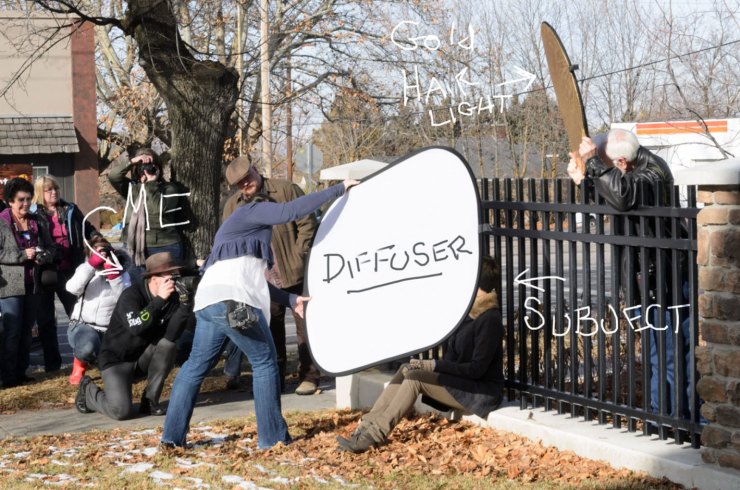
Making it less harsh on the face
Now, about that soft light on the face. The sun is the largest light in the solar system, but relative to me, it’s no larger than my fingertip, and that small light throws a hard-edged shadow. Using the diffuser to shine the dune through enlarges that light and eases the edges of shadows making the transition from bright to dark very gradual and soft (that’s why it’s called soft light).
Just check out the transition between the bright and dark sides of the model’s face in the picture. You can see that one side is brighter and one side darker, but you can’t point to one spot and say, “This is where the dark side is,” because it is a soft transition.
You’ve got this big light source, but there are a couple of tips that will make this tool really valuable. First of all, the closer you put the diffuser to your subject, the brighter your subject will be. For the image above, the diffuser is barely out of the frame, just 18 inches or so from her face. The closer it is, the brighter the bright side will be, but the darker the shadow side will be. I love that! I love to have shadows in my portraiture because they reveal form and texture and without darkness light is understated.
Watch your background
Second, place your subject in front of a dark background. the diffuser makes the light larger, but it also reduces the brightness. That means if the sun is shining on your subject and also shining on the house behind her, when you diffuse the light on her the proper exposure on her face will be darker than the exposure on the house and the house will appear blown out and there will probably be many distracting elements in the image.
Placing your subject in the sunshine in front a dark background or a background in the shade will keep your viewers attention on the brightest thing in the image: your subject. Plus, since it darkens the sun, it often makes it easier for your subject to not squint.
Third, redirect the light. If the sun is directly overhead, you can hold your panel at an angle and create a different direction of light that is more flattering on your subject. That means I can create good light on a bride at high, and that should keep you from being grumpy about shooting weddings in the middle of the day.
.mgl-tiles { display: none; } #mgl-gallery-634ef209b7cb2 { margin: -5px; width: calc(100% + 10px); } #mgl-gallery-634ef209b7cb2 .mgl-box { padding: 5px; } @media screen and (max-width: 768px) { #mgl-gallery-634ef209b7cb2 { margin: -5px; width: calc(100% + 10px); } #mgl-gallery-634ef209b7cb2 .mgl-box { padding: 5px; } } @media screen and (max-width: 460px) { #mgl-gallery-634ef209b7cb2 { margin: -5px; width: calc(100% + 10px); } #mgl-gallery-634ef209b7cb2 .mgl-box { padding: 5px; } }
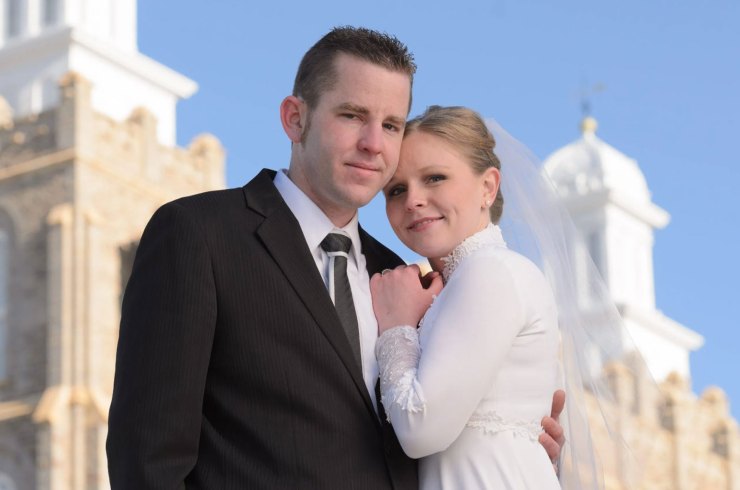
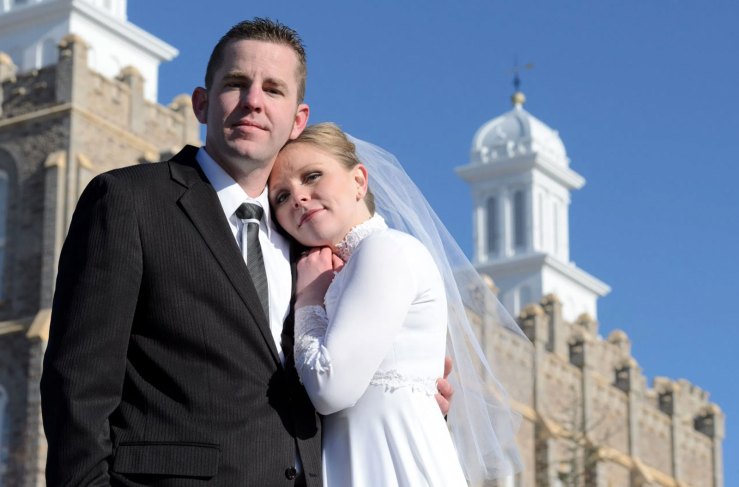
In these wedding images you can see the difference the diffuser makes in softening the light, redirecting it, and darkening it. The light is high overhead, leaving hard edged raccoon shadows in the eye sockets. With the diffuser I’ve redirected the light so that shines more from the side, lightening their eyes and leaving a softer edged shadow. Without the diffuser, the exposure on the couple was f/8, and with it dropped to f/5.6. Note the difference on the spires in the background.
Final touches
Lastly, pay attention to your own shadow, and the edges of the light. When I photograph a senior, the mom is often along for the shoot, and I’ve seen some photographers use her to hold reflectors for them. The thing is, you’ve got to be diligent about the placement of the light, especially with a reflector. If mom turns a little to the left, the light on the face disappears. It’s really tough for people who haven’t practiced to maintain a constant light for you, let alone find the right light to begin with.
Mom can probably handle a hair light, but I need an attentive assistant to hold the diffuser and make sure their own shadow doesn’t block the light shining through. Then, while I’m looking through the lens, I’ve got to be sure that all the light falling on my subject is coming through the diffuser so there are no hot spots as on the hands and sleeve at the bottom of this image.
.mgl-tiles { display: none; } #mgl-gallery-634ef209b879d { margin: -5px; width: calc(100% + 10px); } #mgl-gallery-634ef209b879d .mgl-box { padding: 5px; } @media screen and (max-width: 768px) { #mgl-gallery-634ef209b879d { margin: -5px; width: calc(100% + 10px); } #mgl-gallery-634ef209b879d .mgl-box { padding: 5px; } } @media screen and (max-width: 460px) { #mgl-gallery-634ef209b879d { margin: -5px; width: calc(100% + 10px); } #mgl-gallery-634ef209b879d .mgl-box { padding: 5px; } }
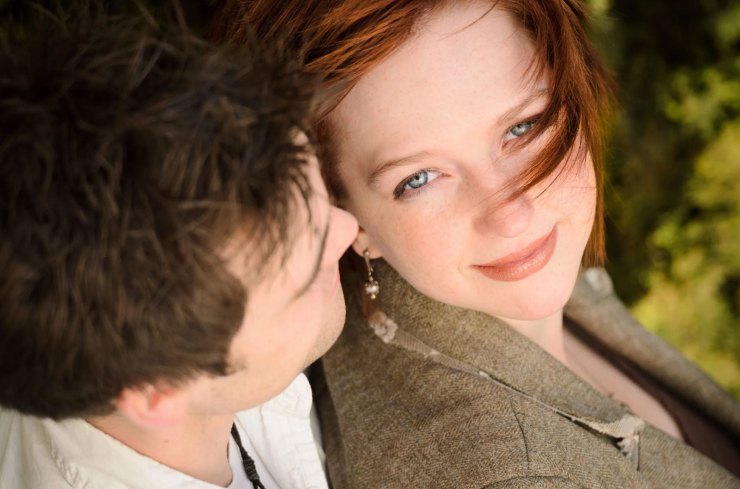
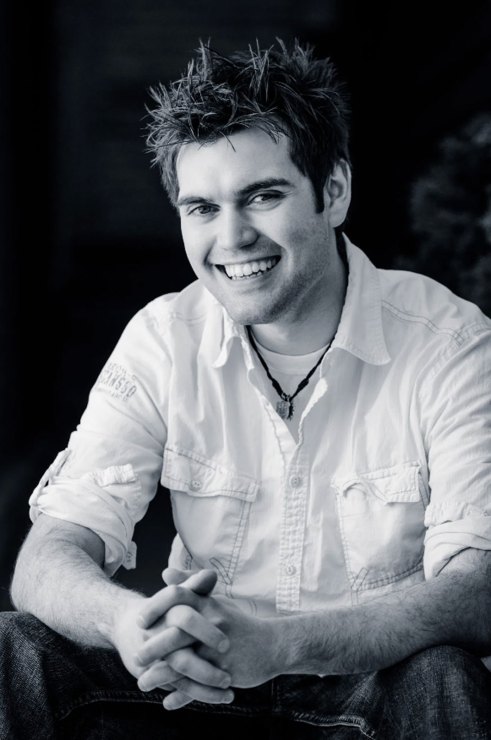
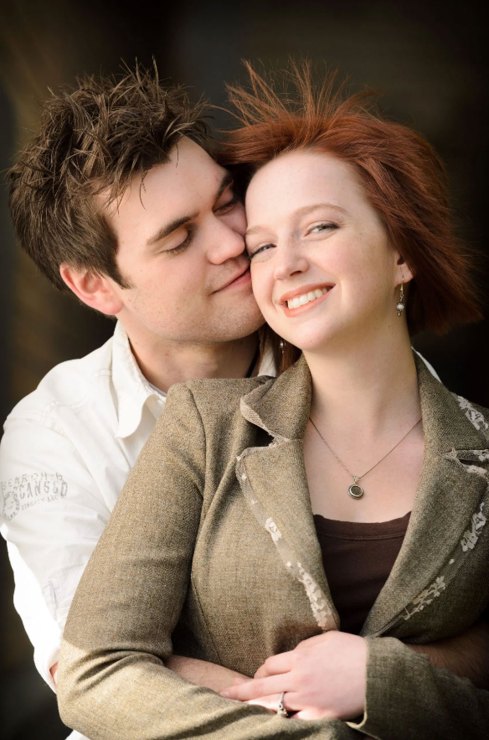
It’s still a great expression, and the little breeze in her hair is nice, but I’d probably crop it so the light is more homogenous.
Photography is all about light, and using a the diffuser from an inexpensive 5-in-1 reflector kit will help you create great light anywhere in the world.
Tell your story with the second annual Visual Storytelling Conference!
Experience four days of interactive, online training sessions featuring a range of educational content with experienced photographers and content creators. This free event kicks off with a series of technical boot camps to build essential skills, followed by live, online sessions on photography, video, business and social media. Join live from March 10-13, 2022!
